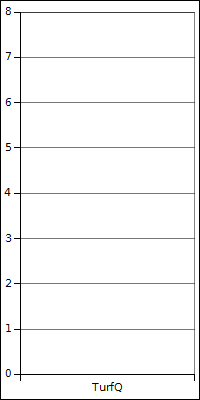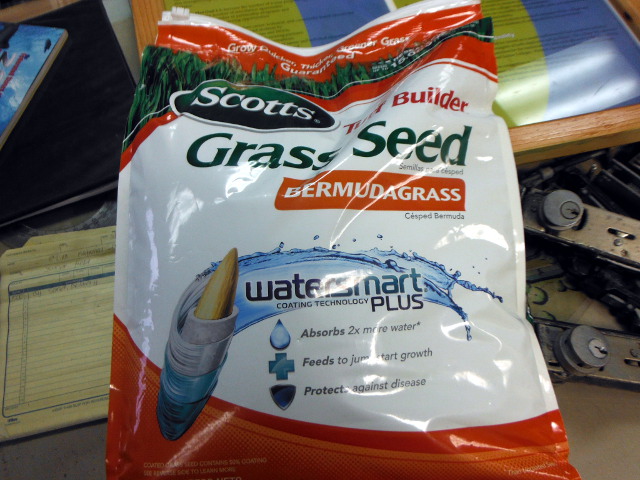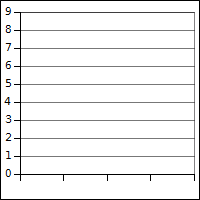Cynodon • Name:
| Cultivar | TurfQ |
|---|
| Tifway | 7.7 |
| Princess | 6.9 |
| Sundance | 6.8 |
| Savannah | 6.4 |
| Sunstar | 6.2 |
| Sultan | 6.0 |
| Del Sol | 5.8 |
| Mirage | 5.8 |
| NuMex Sahara | 5.8 |
| MD2 | 5.7 |
| Solei | 5.7 |
| Pyramid | 5.5 |
| Blue-muda | 5.3 |
| Arizona Common | 5.0 |
| ED5 | 5.0 |
| Guymon | 3.3 |
The College of Micronesia-FSM is developing a multi-sport playing field on the north side of the road. There are special grasses for playing fields, these grasses are called turf grasses. Turf grasses are an area of intense research and product development. Turf grasses are used for lawns, football fields, cricket pitches, golf courses, baseball outfields, and soccer fields. Bermuda grass (Cynodon dactylon) is a popular choice for subtropical and tropical locations. Turf Quality (TurfQ) varies with climate. The gulf coast tropical climate of Mississippi in summer is similar to the hot, humid climate of Pohnpei. Different varieties of bermudagrass were evaluated for turf quality in Mississippi based on a visual 1-9 scale: 9 = excellent, 1 = poor. Data from the Mississippi Agricultural and Forestry Experiment station, Turf Performance of Seeded Bermudagrass Cultivars in Mississippi, 1999.
- __________ Calculate the sample size n.
- __________ Calculate the minimum (quartile 0).
- __________ Calculate the first quartile (Q1).
- __________ Calculate the median (quartile 2).
- __________ Calculate the third quartile (Q3).
- __________ Calculate the maximum (quartile 4).
- __________ Calculate the Inter-Quartile Range (IQR).
- Sketch the box plot for the data.

- __________ Calculate the range.
- __________ If the data is divided into four classes,
what is the width of a single class?
-
Determine the frequency and calculate the relative
frequency for the data using four classes.
Record your results in the table provided.
| Class upper limits | Frequency F | Rel. Freq. |
|---|
| | |
| | |
| | |
| | |
| Sums: | | |
-
Sketch a frequency histogram for the data, labeling your horizontal axis and vertical axis as appropriate.


- __________ What is the shape of the histogram?
- __________ Calculate the mode.
- __________ Calculate the mean.
- __________ Calculate the sample standard deviation sx.
- __________ Calculate the z-score for the Guymon turf quality.
- __________ Calculate the standard error SE of the sample mean.
- __________ Calculate the degrees of freedom.
- __________ Calculate t-critical for a 95% confidence level.
- __________ Calculate the margin of error E of the sample mean.
- Calculate the 95% confidence interval for the population mean μ
p(__________ < μ < __________) = 0.95
Bermudagrass requires nitrogen as a fertilizer for optimal growth. The following table provides paired data on nitrogen input versus grass shoot growth rate.
| Nitrogen (g m-2 mo-1) |
Shoot growth (mg m-2 wk-1) |
| 0.2 | 5 |
| 1.2 | 12 |
| 2.7 | 22 |
| 4.9 | 29 |
Data based on interpretation of Figure 1 Chart A in Bermudagrass Growth, Total Nonstructural Carbohydrate Concentration, and Quality as Influenced by Nitrogen and Potassium, L.E. Trenholm, A.E. Dudeck, J.B. Sartain, and J.L. Cisar. Florida Agric. Exp. Stn. Journal No. R05977. Published in Crop Sci. 38:168–174 (1998).
- _________ For the paired data, calculate the sample size n (the number of data pairs).
- ______________ Calculate the slope of the linear regression for the data.
- ______________ Calculate the y-intercept of the linear regression for the data.
- ______________ Is the relation positive, negative, or neutral?
- ______________ Calculate the correlation coefficient r for the data.
- ______________ Is the correlation none, weak/low, moderate, strong/high, or perfect?
- ______________ Determine the coefficient of determination.
- ______________ Use the slope and intercept to predict the shoot growth for a Nitrogen input of 2 (g m-2 mo-1).
- ______________ Use the slope and intercept to predict the Nitrogen needed to produce a growth rate of 25 (mg m-2 wk-1).
- ______________ Is the data linear or non-linear?
Cynodon or Zoysia?
For the tropical location of Pohnpei there are only two turf grasses that would have to be evaluated for suitability, Bermuda grass (Cynodon dactylon) and Zoysia grass (Zoysia japonica, Z. matrella). There are many factors to consider. The turf grass must be able to handle direct tropical sun, high levels of rain fall, poor soil quality, and being played upon. The last factor is called traffic tolerance. Research done in 2010 by Trappe, Patton, Karcher, and Richardson, included evaluation of tropical turf grasses for traffic tolerance in full sun conditions. The data provided is from table three of their report Shade and Traffice Tolerance of Bermudagrass and Zoysiagrass - Year 2 results in Turfgrass Report 2009 published by the Arkansas Agricultural Experiment Station Research Service as report number 579. In table three the values refer to the percent green coverage in full sun treated with six weeks of traffic stress during the summer of 2009. Traffic stress was simulated using a CADY Traffic Simulator. The larger the green coverage number, the better.
Provide numeric statistical support for the answers to the following questions.
- Does Bermuda grass or Zoysiagrass provide a higher average green coverage?
- Is the difference significant?
- Looking only at green coverage, does it matter which the college uses and, if so, why?
Use the back of this sheet to write up your analysis.
| Species | Cultivar | Green Cvg | Species | Cultivar | Green Cvg |
|---|
| Cynodon dactylon | Princess | 84 | Zoysia japonica | El Toro | 75 |
| Cynodon dactylon | Riviera | 86 | Zoysia japonica | Meyer | 89 |
| Cynodon dactylon x tranvaalensis | Patriot | 53 | Zoysia japonica | Palisades | 73 |
| Cynodon dactylon x tranvaalensis | Tifsport | 76 | Zoysia japonica | Zenith | 76 |
| Cynodon dactylon x tranvaalensis | Tifway | 87 | Zoysia matrella | Cavalier | 81 |
| | | Zoysia matrella | Zorro | 83 |

